Marble sarcophagi with figural relief carving were produced in Rome for over 300 years, from around AD 100 into the first decades of the fifth century. In the final phase, Christian imagery at first competed with and eventually displaced non-Christian themes. This transformation was a natural consequence of the growing number of Christians and their penetration into the ranks of the Roman elite and sub-elite who purchased such commemorative monuments. Having begun the fourth century as a minor and intermittently persecuted minority, the Christians ended it as a dominant majority. Pagans did not, however, disappear.Footnote 1 They continued to serve in high public office, populate the legally established elite orders, and control considerable personal wealth. Yet, few sarcophagi conventionally dated to this period bear imagery that is not explicitly Christian.
The paucity of late pagan sarcophagi has often been remarked (Koch and Sichtermann, Reference Koch and Sichtermann1982: 259; Koch, Reference Koch2000: 346–53; Wrede, Reference Wrede2001: 76–84), and the occasional enumerations, although not presented as exhaustive, refer to very modest numbers of such monuments. Andreae and Jung (Reference Andreae and Jung1977) listed eighteen; twelve were noted by Koch and Sichtermann (Reference Koch and Sichtermann1982: 259, n. 76). Jutta Dresken-Weiland's more extensive, but still provisional, inventory (Reference Dresken-Weiland2003: 64–5, table 8) estimated that in the first three decades of the fourth century, 317 pagan sarcophagi were produced compared with 463 classified as Christian; for the period 330–400 she found only a further twelve non-Christian examples, against 325 Christian.
These numbers have not attracted the perplexity one might expect. Alan Cameron (Reference Cameron2011a: 183–4), while defending the vibrancy of late Roman paganism, cited Dresken-Weiland's statistics without query or qualification. Hugo Brandenburg, on the other hand, wondered (2004: 14) ‘that the number of neutral or pagan sarcophagi is surprisingly small having regard to the fact that Roman society, still solidly pagan for most of the 4th century, presumably needed a consistent supply of typical non-Christian sarcophagi’. Paul Veyne (Reference Veyne2005: 784, n. 103) and Leonard V. Rutgers (Reference Rutgers and Erdkamp2013: 513–14) also expressed surprise at the very few pagan sarcophagi ascribed to a period when there were still many pagans to occupy them. Several theories might be advanced in response to this conundrum. Before considering them, it is appropriate to summarize the demographic and material evidence for the phenomenon itself.
THE PAGAN SARCOPHAGUS SHORTFALL
Counting fourth-century Christians, pagans and their sarcophagi is not an exact science. The disparity between demography and the archaeological record can, however, be illustrated by contrasting estimates of the relevant populations with statistics from published sarcophagus catalogues, notably the Antiken Sarkophagreliefs (ASR) series and the three volumes of the Repertorium der christlich-antiken Sarkophage (Repertorium).
The demographic component of this comparison is illustrated in Chart 1 (generally following Couzin, Reference Couzin2014). It presents an estimate of the number of deaths among well-to-do Romans, those from households with sufficient disposable income to purchase an expensive marble sarcophagus, cumulated in half-centuries from AD 275 to 425. The top curve follows total deaths, and the lower curve deaths among the pagan contingent. (For a more detailed discussion of the data and analysis, with references, see the Appendix to this article.)

Chart 1. Deaths of well-to-do Romans.
The negative slope of the top line on this chart reflects, first, a decline in the population of Rome during this period, by perhaps as much as a third. At the same time, economic factors conspired to accelerate the downward trend in the number of households able and willing to spend disposable income on funerary luxury. As per capita income fell, income inequality increased. Thus, there were fewer Romans, and the proportion of them living at or near subsistence, always a substantial majority in antiquity, rose. The rich became both richer and less numerous. The lower line falls even more steeply than the upper. This reflects the progressive Christianization (and consequential ‘de-paganization’) of the Roman elite and sub-elite. The pace and timing of their conversion is uncertain and controversial, but not the overall result.
Consistent with this economic and religious demography, metropolitan sarcophagus production should have declined during the fourth century, and a decreasing proportion of the total should correspond to the demands of the traditional, non-Christian clientele. The archaeological record supports both these expectations, as illustrated in Chart 2.
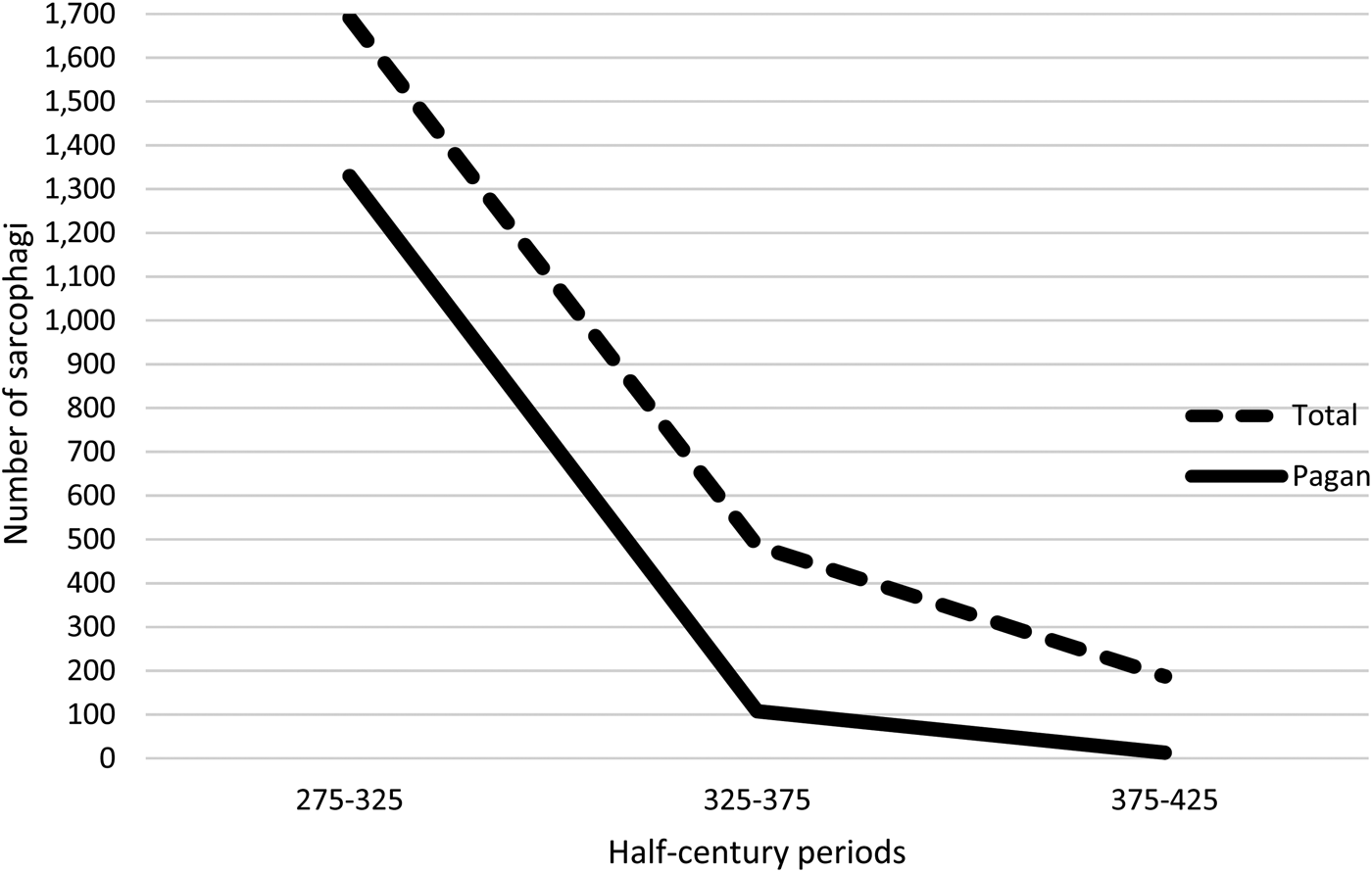
Chart 2. Preserved Roman metropolitan sarcophagi.
The meaning and content of ‘pagan’ in this chart requires some clarification (for further detail on the underlying data, see the Appendix). Many late Roman sarcophagi present no obvious indication of religious affiliation; which of these were originally occupied by Christians or non-Christians is unknown and unknowable. Potentially contentious examples range from ambiguous fragments (Fig. 1) to instances of shared or ‘neutral’ iconography like the common praying figures (orants) and bucolic motifs (Fig. 2). The enthusiasm of the pioneers of Christian archaeology to perceive Christian significance in such sarcophagi is apparent in Josef Wilpert's seminal catalogue (Reference Wilpert1929–32) and was only modestly tempered in the first volume of the Repertorium (Rep. I). A more rigorous delimitation of the Christian corpus, as already proposed by Klauser (Reference Klauser1958–67), is reflected in the editorial policies of later Repertorium volumes (Rep. II and Rep. III).Footnote 2 This more restrained approach was adopted by Guntram Koch (Reference Koch2000: 15–28), whose inventories were used to construct the data presented in Chart 2.
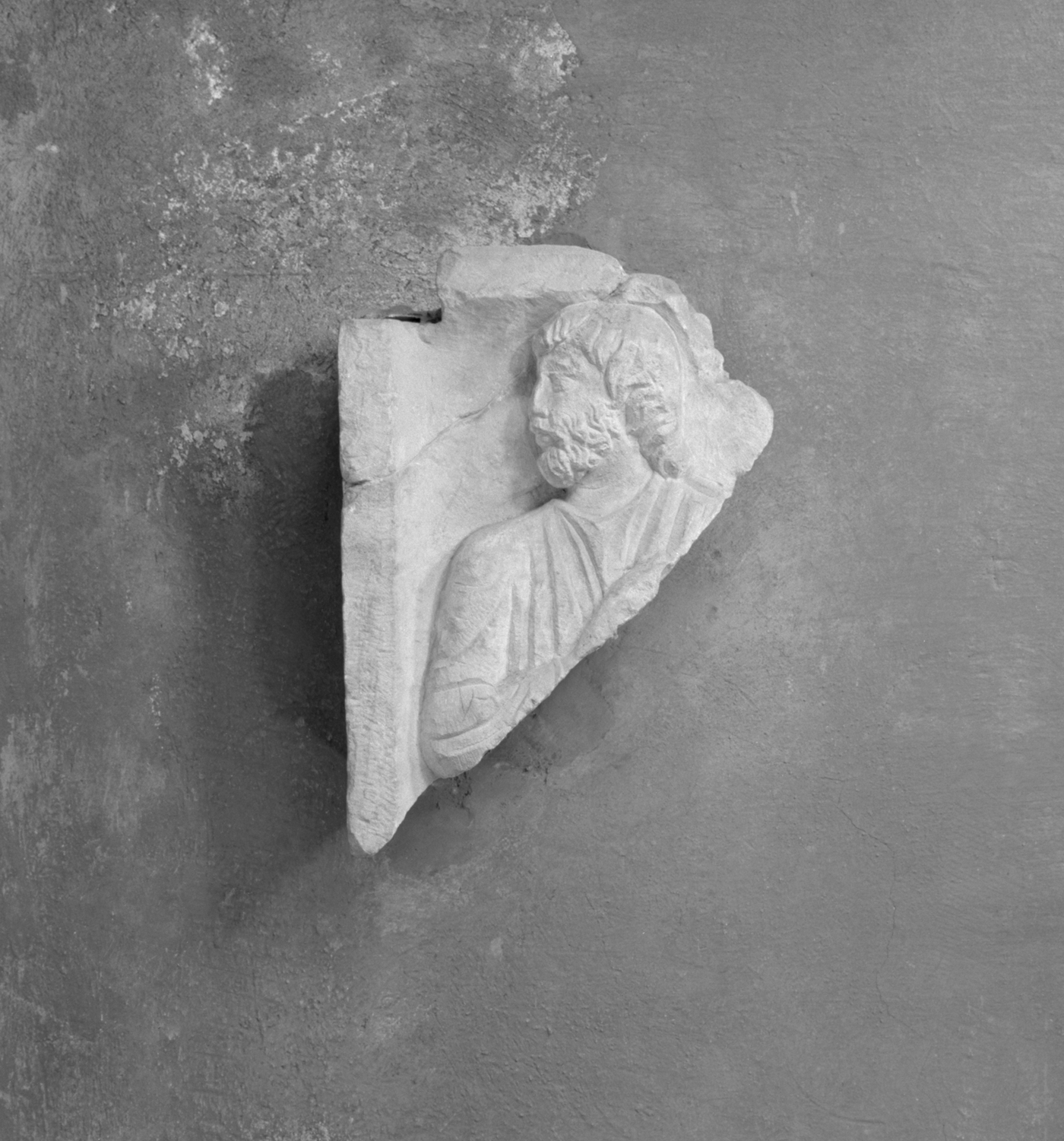
Fig. 1. Sarcophagus fragment. Cimitero di Pretestato, Rome. Photo: D-DAI-ROM 59.508 (J. Böhringer).
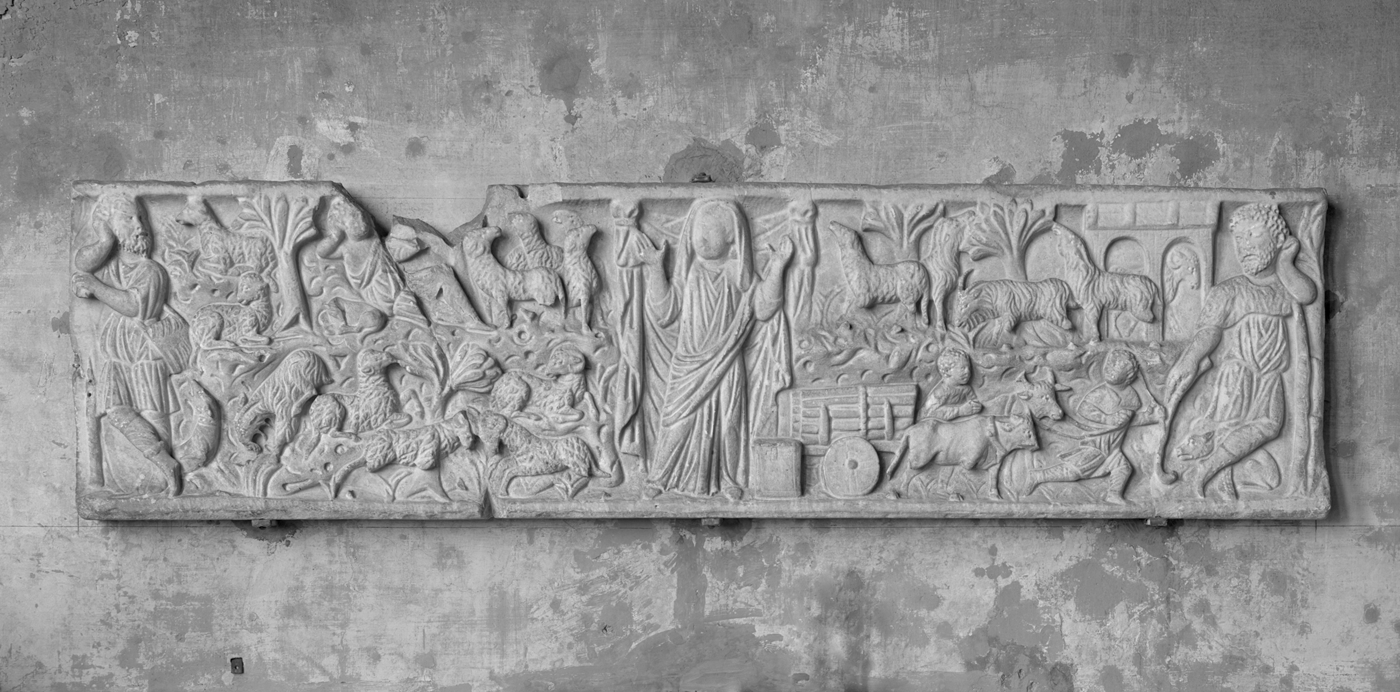
Fig. 2. Sarcophagus front with orans and bucolic motifs. Palazzo Farnese, Rome. Photo: D-DAI-ROM 64.1737 (Como).
Koch's lists are mostly restricted to sarcophagi with Christian imagery: scenes from the New Testament and related apocrypha, doctrinal themes, or Old Testament motifs, these last almost always accompanied by more specifically Christian ones. The questionable fragments are omitted, as are most of the chests with neutral themes, even controversial pieces like the Three Shepherds sarcophagus in the Vatican Museums (Fig. 3).Footnote 3
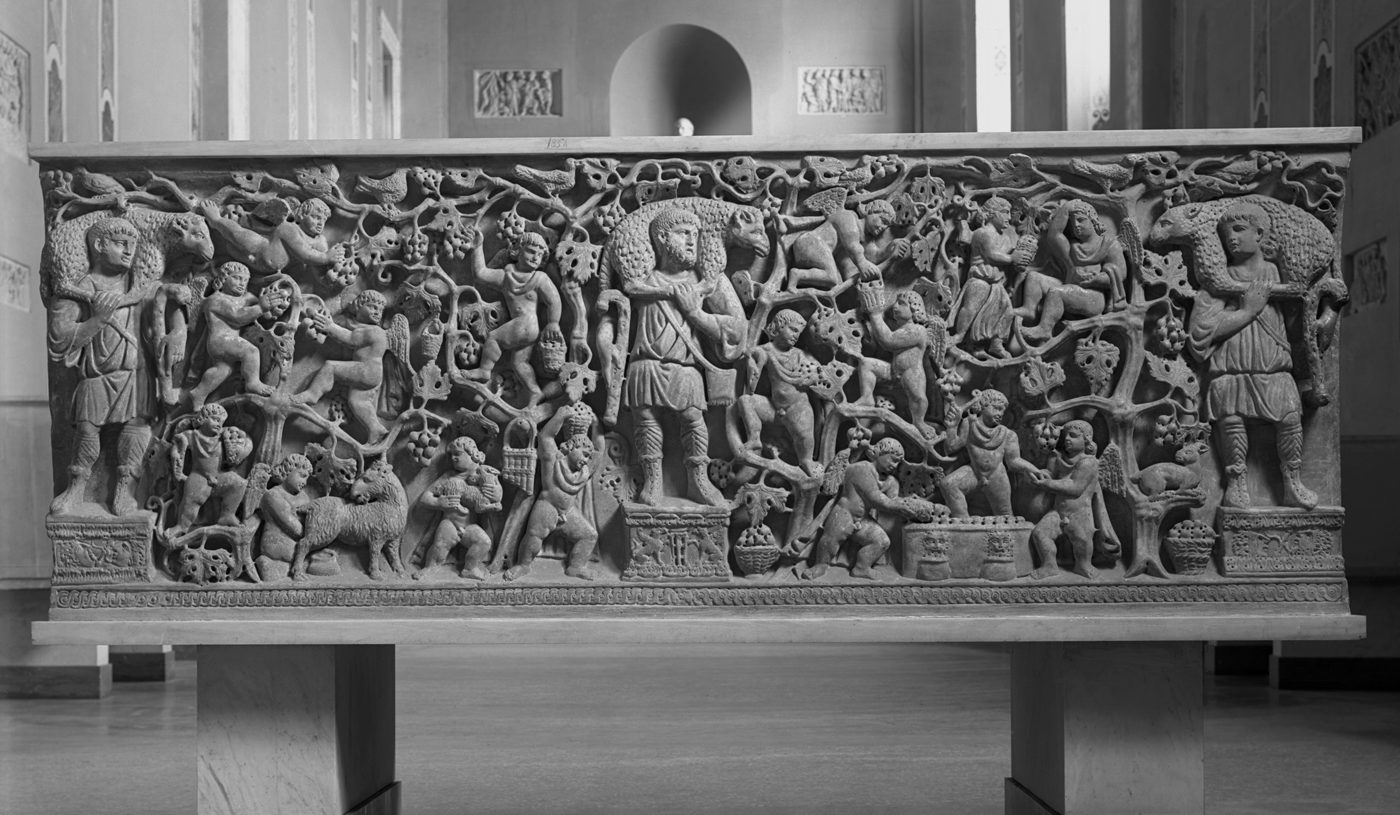
Fig. 3. Three Shepherds Sarcophagus. Museo Pio Cristiano, Vatican City, Inv. 181. Photo: D-DAI-ROM 3236.
These rigorous criteria could be still further tightened, but the refinements would have no material effect on the data. For example, a modest number of sarcophagi earn their Christian classification in Koch's inventory solely by their inscriptions. Some are secure — like the Christogram in Rep. I: no. 132 or the name of John the Evangelist in Rep. I: no. 784 — others rather less so. Grammatical variants of depositus, in particular, were not exclusively Christian; the term was also used by pagans (Carletti, Reference Carletti2004) and occasionally by Jews (Kraemer, Reference Kraemer1991: 159). It is also theoretically possible that additional pagan sarcophagi might lurk even amongst those with Christian imagery if common motifs achieved a certain secular or ecumenical status. Hijmans (Reference Hijmans2000) argued for just such a pagan appropriation of Jonah in a cubiculum vault mosaic.Footnote 4 If crossovers of this nature did occur they were probably at least offset by the reverse phenomenon, the Christian use of sarcophagi with neutral decoration normally classed as pagan.
In the result, over half the Roman monuments in the Repertorium have been ‘declassified’. To call them pagan, however, would merely substitute one questionable religious classification for another. Many of these sarcophagi, although bereft of explicit Christian decoration, were used by Christians. What are now illegible fragments could as easily have once been combined with a Christian as a non-Christian image; sarcophagi with neutral or classical decoration sometimes bear original or secondary inscriptions that demonstrate Christian use (Koch, Reference Koch2000: 7–14; Rep. II: nos. 288–96). And even without such epigraphic evidence, it is reasonable to suppose, as most scholars do, that many did not baulk at adopting this sort of imagery which was, after all, often deployed alongside overtly Christian iconography.
The approach taken in constructing Chart 2 was to reallocate the sarcophagi catalogued as Christian but lacking Christian iconography. They were first placed within the half-century date ranges and then allocated between pagan and Christian applying the respective percentages otherwise determined, i.e., following the proportions established before this incremental expansion. The process (more fully explained in the Appendix) is generous to the pagans. Instead of the twelve late pagan sarcophagi cited by Dresken-Weiland, the Chart 2 data include 120. The goal of this exercise was not to resolve but rather to circumvent the thorny and ultimately insoluble problem of classification.
The evolution of populations and sarcophagi as represented in Charts 1 and 2 are directionally similar but the curves fall more steeply in Chart 2.Footnote 5 The sharper plunge of its upper line reflects and illustrates the decline of the Roman sarcophagus habit and its ultimate disappearance early in the fifth century. The collapse of the bottom line, asymptotically approaching zero, points to a more rapid and totalizing Christianization of the monuments than of their potential occupants. Chart 3 represents this discrepancy more directly, recasting the data in the first two charts to compare pagan deaths with pagan sarcophagi.
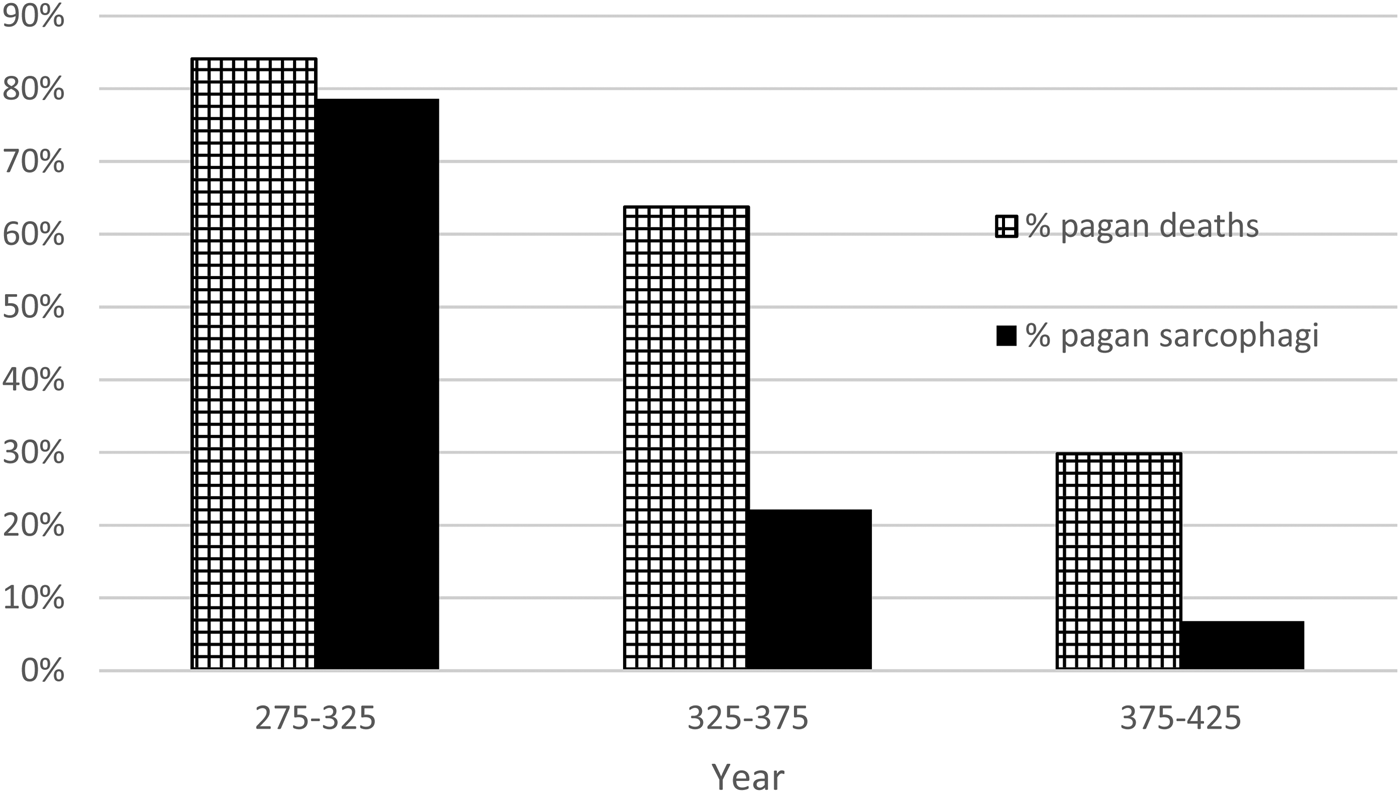
Chart 3. Deaths of well-to-do Romans and their sarcophagi.
These percentages should not be taken literally; the purpose here is not to measure the disparity between demography and the material record but merely to support its existence. Even at this coarse level of granularity, the dissonance is apparent, corroborating the sense in the literature that there are ‘not enough’ late pagan sarcophagi.
The bars in Chart 3 could be levelled either by lowering the percentage of pagan deaths or by raising the percentage of pagan sarcophagi. The demographic assumptions are certainly open to challenge; there is, in particular, no consensus regarding the rate of Christianization. The range of options, however, provides insufficient leeway to resolve the discrepancy. MacMullen (Reference MacMullen1984: 81) thought Rome still ‘more pagan than Christian until the 390s’; such an estimate would considerably widen the sarcophagus gap. Stark (Reference Stark1996: 7) put the tipping point for the Empire as a whole closer to 350, which might slightly narrow it. Christian conversion in the upper income strata might have been a bit slower than assumed, but not likely much faster.
Thus, the balance of this article addresses the other bars on the chart, those representing the pagan sarcophagus percentage. Three categories of explanation will be considered. The first attempts to eliminate the disequilibrium by fine-tuning the archaeological record: searching for more pagan sarcophagi outside the catalogues or, following a conjecture proposed by Paul Veyne (on which, see below), revising the standard chronology. A second option is to accept the material record as accurately reflecting a precipitous decline in fourth-century production, presumably resulting from a shift in pagan mentalities. Neither erroneous interpretation of the record nor insufficient pagan production, however, provides an adequate explanation for the sarcophagus deficit. Instead, the imbalance between Christian and non-Christian monuments will be ascribed to a difference in survival rates, the result of a bias over the longue durée favouring the preservation of Christian imagery.
CORRECTING THE RECORD
Neither the accuracy nor the completeness of the archaeological record is entirely satisfactory. One way to close the fourth-century pagan sarcophagus gap would be to find more pagan sarcophagi. The most obvious source is within the large number dubiously classified as Christian, but that group has already been scoured in the construction of the data. Another place to look is outside the catalogues. Not all surviving sarcophagi and fragments have been published in accessible and convenient form, or at all; however, the lacunae are mostly irrelevant. Proposed or delayed additions to the ASR series, in particular, would mainly include sarcophagi that are either too early or extra-metropolitan.Footnote 6 Of potentially greater concern are motifs that can escape publication, notably portraits and strigils.
Both are preserved in large numbers. The Arachne online database of the German Archaeological Institute and the Archaeological Institute of the University of Cologne includes 343 entries under the heading of portraits;Footnote 7 Stine Birk (Reference Birk2013) catalogues 677. Janet Huskinson estimates at around 800 the number of surviving strigillated sarcophagi (2015: 81). These portraits and strigils range from tiny bits to full monuments. The better preserved are generally included in either the ASR or the Repertorium (or both) by reason of the character of other motifs on the same object. Most of the rest have been assigned dates — on formal or stylistic grounds, or simply on the basis of probability — too early to be relevant to this study.Footnote 8 More important, the uncatalogued fragments rarely provide any clear signal of religious affiliation; they could just as well have broken off from a Christian as from a non-Christian monument. It would be methodologically unsound to regard them as disproportionately pagan.
Another place to look for more fourth-century pagan sarcophagi, following a provocative suggestion by Paul Veyne (Reference Veyne2005: 784, n. 103 and 782, n. 97), is in the large third-century corpus. Veyne's thesis is that the missing monuments are hiding in plain sight, mistakenly left out of consideration by virtue of erroneous dating. The conjecture is not extensively developed. It appears briefly in two footnotes with only one example to illustrate the thought, the Annona Sarcophagus conserved in the Museo Nazionale Romano, Rome (Fig. 4).Footnote 9 Veyne challenges its customary date of 270–80 on the basis that the deceased praefectus annonae (the official charged with the administration of the food supply of Rome) is depicted as a senator, an elevation in the status of this office that occurred only under Constantine. His hypothesis depends on the senatorial identification, which Veyne based on the appearance of a bearded figure standing behind the prefect in whom he recognized the Genius of the Senate. That interpretation, while not without scholarly support, does not represent the prevailing view. Reinsberg (ASR I.3: 124–5), after reviewing the opposing theories, concludes that the deceased was probably an equestrian, the order from which the praefectus annonae had traditionally been selected.
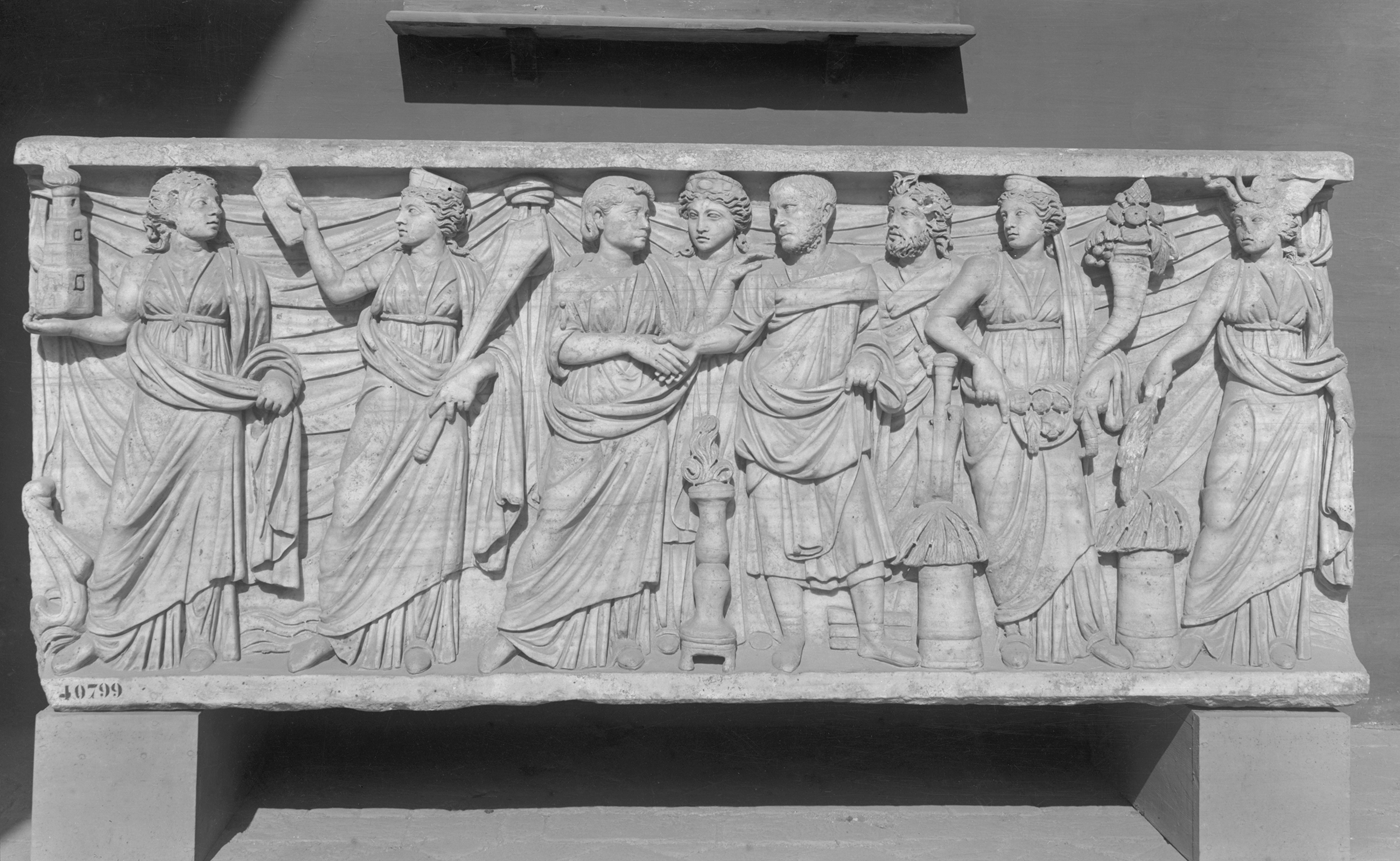
Fig. 4. Annona Sarcophagus. Museo Nazionale Romano, Rome, Inv. 40799. Photo: D-DAI-ROM 5459 (T. Weigand).
Finding more readily defended instances of mistaken dating is difficult. The Eutropos funerary plaque in Urbino might be cited as indirect evidence. It depicts a craftsman putting the finishing touches to a strigillated lenos sarcophagus with lions’ heads (Fig. 5).Footnote 10 The extant sarcophagi that most resemble the one pictured are generally dated towards the middle of the third century, occasionally into its fourth quarter, and almost never later.Footnote 11 Yet, the plaque is often placed in the fourth century, generally on stylistic grounds.Footnote 12 This could indicate that production of such lions’-head sarcophagi actually continued well after AD 300, but the more likely inference is that the grave slab is earlier, as several commentators have, indeed, proposed.Footnote 13
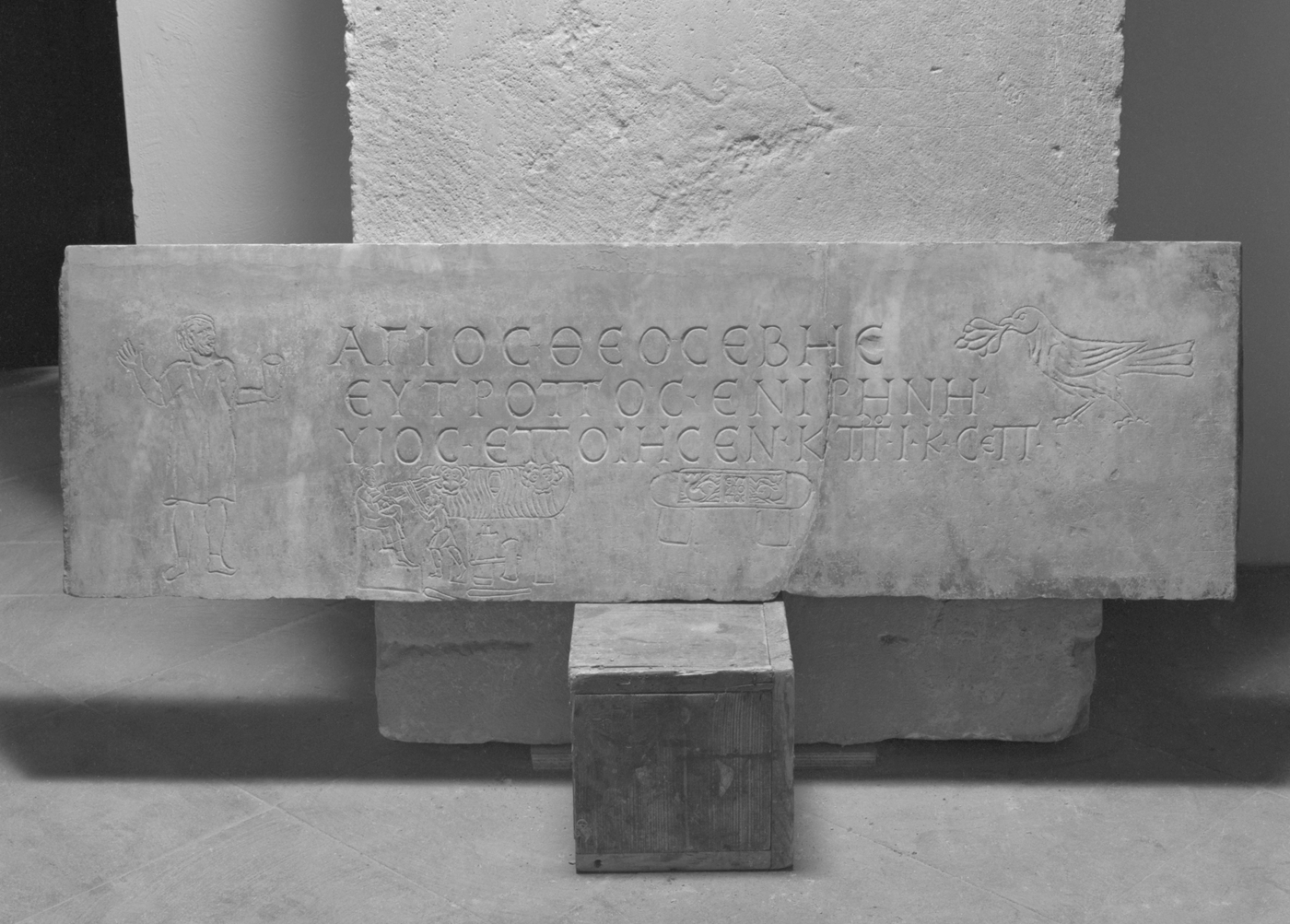
Fig. 5. Eutropos funerary plaque. Museo del Lapidario di Urbino, Inv. 40674. Photo: D-DAI-ROM 75.1101 (C. Rossa).
Notwithstanding the absence of reliable examples, redating is a tempting solution to the pagan sarcophagus deficit. Having regard to the secular decline in production through the fourth century and the large numbers of sarcophagi conventionally dated to the third, it is not necessary to assume that dating errors affect only one class of sarcophagi (pagan, not Christian) or point overwhelmingly in one temporal direction (forward, not back). A purely random chronological reallocation would increase the number of sarcophagi assigned to the later period with a far greater net gain in pagan than Christian numbers.
But this mathematical possibility cannot, in and by itself, warrant an overhaul of sarcophagus chronology. Although dating is imprecise and opinions regarding particular monuments are open to debate, a broad-brush and suspiciously teleological revision is unwarranted. It encounters, moreover, a stylistic obstacle. Earlier sarcophagi look different from later ones, and also from fourth-century public monuments like the Arch of Constantine whose influence on sarcophagi has often been remarked (L'Orange and Gerkan, Reference L'Orange and Gerkan1939: 225; Stutzinger, Reference Stutzinger1982: 77–8). In theory, Roman workshops could have operated parallel production lines, supplying thousands of retro models to conservative pagan customers and ‘modern’ works to the Christians; in practice, artisanal, organizational and commercial considerations argue strongly against this notion.
DEFENDING THE RECORD
Instead of demanding an improbable correction, the material record of fourth-century Roman sarcophagi could accurately reflect original production. In this case, the uneven bars in Chart 3 would indicate a much earlier abandonment of the sarcophagus habit by well-to-do pagans than by their Christian neighbours. The Christians of Rome also eventually gave up on sarcophagi in the first part of the fifth century. This later commemorative turn has been linked by some to an exogenous development — the socio-economic trauma following Alaric's sack of Rome in AD 410 (Stutzinger, Reference Stutzinger1982: 178; Koch, Reference Koch2000: 223, 335, 339) — while others prefer to credit a growing Christian preference for burial ad sanctos, a change in mentality that prioritized location over display (Brandenburg, Reference Brandenburg and Koch2002: 22–3; Dresken-Weiland in Rep. II: XV).Footnote 14 Shifting commemorative mentalities have also been invoked to explain the third-century Entmythologisierung, a turn away from mythological themes in sarcophagus decoration (Zanker, Reference Zanker, Neudecker and Zanker2005; Zanker and Ewald, Reference Zanker, Ewald and Slater.2012: 254–60; Koortbojian, Reference Koortbojian, Galinier and Baratte2013).
These analogies have not been invoked with respect to the fourth-century pagan sarcophagus deficit, nor do they appear to be plausible. There is no evidence of socio-economic decline among the non-Christian elite or sub-elite of Rome and, in any event, such considerations have already been accounted for in the demographic data. That leaves the possibility of a shift in attitude, some newly discovered pagan funerary restraint. Yet, even as their dominance was challenged and eventually overthrown, pagans showed little evidence of fearful dissimulation.
Alan Cameron (Reference Cameron2011b, Reference Cameron, Salzman, Sághy and Lizzi Testa2016) sharply and convincingly joined issue with an interpretation of the literary sources by Stéphane Ratti, who imputed just such reticence to aristocratic fourth-century pagans (Ratti, Reference Ratti2010; Reference Ratti2012: 33–49). More directly relevant to commemorative display is evidence of an undiminished representational audacity. The commemoration in 384 of the death of the senator and consul designate Vettius Agorius Praetextatus is emblematic. His disappearance was mourned by crowds in the streets of Rome, perhaps dignified by a public funeral, and marked by the erection of several statues. These included the singular honours of a monument in the Roman Forum (LSA-1409; CIL VI 1779) and another consecrated by the Vestal Virgins, with whom he had served as pontifex (Kahlos, Reference Kahlos2002: 151–9; Matthews, Reference Matthews, Rousseau and Papoutsakis2009: 131–2).
Such honorific statues are conspicuous testimony to continuing material display by elite pagans. At least half of the dozen or so erected in the Forum of Trajan in the fourth century represented non-Christian imperial officials, not counting emperors (Chenault, Reference Chenault2012: 130, table A).Footnote 15 Far from being cautiously suppressed, pagan religious offices were proudly published on statue bases. The inscription for a statue of L. Aradius Valerius Proculus, dated 340, announced him to be augur, pontifex maior, quindecimvir sacris faciundis (LSA-1396; CIL VI 1690); serving Vesta and Sol are among the honours ascribed in 347 to Memmius Vitrasius Orfitus (LSA-1441; CIL VI 1739); a decade later Vulcacius Rufinus is qualified pontifex maior (LSA-1253; CIL VI 32051); towards the end of the century, Fabia Aconia Paulina, the widow of Vettius Praetextatus, is described beneath her statue as an initiate into the Eleusinian and other mystery cults, priestess of Hecate and devotee of Ceres (LSA-1474; CIL VI 1780). Statues were erected to honour at least two chief Vestal Virgins in the second half of the fourth century.Footnote 16 Nothing suggests that pagans were more muted in their self-representation than their Christian peers.
A fortiori, pagan reticence would be surprising in the more modest gesture of funerary decoration. Sarcophagi were not on display for all to see. They were not paraded through the streets, even in the case of public rites associated with high-level aristocrats. Most sarcophagi were viewed only by family, household retainers and a few friends or associates. Epitaphs did not commonly include expressions of religious affiliation other than the ubiquitous DM (dis manibus), a formula not scrupulously avoided by Christians — Caldelli (Reference Caldelli and Di Stefano Manzella1997) counted 158 examples — or even Jews (Kraemer Reference Kraemer1991: 155–8). Most important, the preferred pagan funerary motifs in the fourth century comprised mostly secular or neutral themes, the deployment of which would not have attracted opprobrium, or even much notice.
Thus, apart from the dearth of sarcophagi itself, nothing points to a change in mentality regarding funerary display that would lead pagans to abandon the sarcophagus habit earlier than Christians. Short of such a revolution in pagan commemorative practices, an alternative — if novel and ultimately unconvincing — conjecture would attribute the decline in pagan sarcophagus production not to a renunciation of sarcophagal burial but rather to a greater inclination to reuse old chests.
Recycling marble was a long-standing Roman tradition, and reduced supply from eastern quarries in the third and fourth centuries sharpened the incentive (Fant, Reference Fant and Oleson2008: 132–3; Prusac, Reference Prusac2016: 16–19, 47–50, 118–22). Christian and pagan customers were equally likely to buy new sarcophagi made from reused marble, but the serial use of family funerary heirlooms or the acquisition of ‘pre-owned’ sarcophagi bearing mythological or other obviously pagan imagery could, hypothetically, have been more common in the non-Christian community. Like Veyne's redating conjecture, excess reuse of earlier sarcophagi by pagans would imply that the fourth-century shortfall can be made up from monuments already known and considered (in this case accurately) to have been produced in an earlier century. Also like the theory of chronological revision, disproportionate reuse is mathematically possible, theoretically tempting, and lacking empirical validation. It does not demand a complex organization of production to accommodate conflicting demands, but shares with the redating hypothesis an improbable divergence of taste between groups separated by religious affiliation and not much else.
IGNORING THE RECORD
The vast majority of sarcophagi are lost, destroyed, or altered beyond recognition. Those that survive are commonly considered to be indicative of what was produced. Inferences such as this are basic to archaeology and art history; sometimes, however, the record is misleading. Consider the material of antique sculpture. Literary and epigraphic sources confirm that the relative proportions of bronze and marble were far different in ancient cities than they are in modern collections (Stewart, Reference Stewart1990: 24–5; Daehner and Lapatin, Reference Daehner, Lapatin, Daehner and Lapatin2015: 22). This particular discrepancy has a technical explanation; in other cases, social, cultural or political factors are responsible. For example, emperors who remained popular are over-represented in the corpus of surviving imperial portraits compared with those who were condemned by posterity (Varner, Reference Varner2004).
The vicissitudes of survival also affect sarcophagi. Preservation and destruction were not uniformly practised or meted out. ‘Unimportant’ sarcophagi must have suffered the most, fields of strigillation and portraits of forgotten decedents attracting less benign attention in most periods than mythological themes, battles, hunts or biblical scenes. Given the subsequent religious and cultural history of Europe, one might anticipate another bias, this one tending to favour the conservation, or at least deter the erasure, of Christian as compared with non-Christian images.Footnote 17
Hugo Brandenburg (Reference Brandenburg, Bisconti and Brandenburg2004: 14) briefly mooted the possibility that the ‘hazards of preservation of late antique non-Christian sarcophagi’ might be partly responsible for their rarity. Asymmetric rates of survival should not be invoked hastily to explain different frequencies among classes of artefacts. Ideally, any such hypothesis should be properly tested; however, in the case of Christian and pagan sarcophagi, a methodological conundrum arises: lost monuments cannot be examined, their original state is almost never documented and most of those that survive in legible condition are already included in the relevant catalogues. Nonetheless, there is persuasive, albeit indirect, evidence that supports the inference that sarcophagi with non-Christian decoration are less likely to have been preserved than otherwise similar monuments with Christian themes. In particular, certain practices in the medieval and occasionally in the later reuse of antique sarcophagi intimate a degree of differentiation based on iconography.
Antique marble sculptures, including sarcophagi, were recycled in lime kilns, used in the construction of walls and buildings, especially churches, and sometimes simply smashed to bits and discarded.Footnote 18 Many remain undiscovered. The imagery on objects lost or subjected to destructive reuse can rarely be recuperated. Very occasionally, a preserved inscription or later description invites speculation regarding the appearance of a monument no longer extant. An eighteenth-century source claimed that a sarcophagus repurposed for an elite burial in 1440 in Santa Maria in Aracoeli, Rome, depicted ‘figures of gladiators’ (Casimiro Romano, Reference Casimiro Romano1736: 199); perhaps this was a battle scene (Agosti et al., Reference Agosti, Farinella, Gallo, Tedeschi Crisanti, Andreae and Settis1984: 164). Such literary sources are, however, too few, equivocal and unreliable to inform a comparison of survival rates between pagan and Christian sarcophagi.
The scholarly literature on reuse concentrates instead on instances where the original sarcophagus imagery — however altered, damaged, supplemented or ‘improved’ — is still available for study. Hundreds of such recycled monuments have been discovered, and more are recorded in modern prints or drawings (Koch and Sichtermann, Reference Koch and Sichtermann1982: 627–32; Andreae and Settis, Reference Andreae and Settis1984; Huskinson, Reference Huskinson2015: 271–5). The examples include Christian and non-Christian iconography, and occur from late antiquity to the present day.Footnote 19 Reuse has attracted both conceptual and opportunistic theorizations: many patrons were motivated by antiquarianism, conspicuous consumption, or evocation of ancient family genealogy; all were attracted to the financial benefits of low-cost, high-quality marble. Reused sarcophagi with their ancient imagery still legible provide valuable raw material for the burgeoning field of spolia studies.Footnote 20 But these have generally been catalogued. They do not, therefore, advance the cause of distinguishing between deficient production and impaired preservation as the primary cause of the fourth-century pagan sarcophagus shortfall.
There exists a tertium quid between destruction and preservation. Some sarcophagi were reused in a manner that concealed the iconography without eradicating it. This peculiar practice has been studied as an aspect of medieval attitudes towards Roman antiquities.Footnote 21 It may also be relevant to the puzzle of the missing fourth-century pagan sarcophagi, because the known examples suggest that posterity was not entirely impartial in its treatment of Christian and non-Christian iconography.
Both types of imagery are often found on prominent display when sarcophagi have been incorporated into Christian tombs, embedded in church facades or, less respectfully, redeployed as planters or water troughs. But in the construction of a few sepulchral monuments the antique sarcophagus was reversed; its former back, conveniently left uncarved in common Roman practice, was then decorated to suit the new Christian occupant. A precocious, late-antique instance of this phenomenon is the reuse of a third-century Endymion sarcophagus for the burial of Saint Adeodatus, archpresbyter of Nola (d.473; Rep. II: no. 295; ASR XII.2: no. 78, fig. 76.1, 85.1–3; CIL X 1365). The mythological representation was turned away from the viewer who saw, instead, an epitaph extolling the virtues and ecclesiastical service of the holy man.
Such reversals occur repeatedly in the Middle Ages. The heirs of the Neapolitan noble Riccardo Piscicelli (d.1331) acquired a late-third-century Seasons sarcophagus for his tomb in the family chapel (Fig. 6a) (Bridges and Ward Perkins, Reference Bridges and Ward Perkins1956: 168–9, fig. XXIII a, b; Barbavara di Gravellona, Reference Barbavara di Gravellona and Cupperi2002: 204, figs 108–9; ASR V.4: no. 39, fig. 39.1). Its front was turned against the wall and a clipeus of the dead Christ between kneeling knights was carved on what used to be the back (Fig. 6b); heraldic arms were added to the short sides. The lid was also ancient, a strigillated sarcophagus front, now supplemented by a recumbent effigy of the deceased. The monumental tomb of Pope Clement IV (d.1268) in Viterbo incorporated a reoriented antique strigillated sarcophagus with the half-open door motif, its rear face covered in the thirteenth century with an ostentatious Cosmatesque mosaic.Footnote 22 Tritons, Nereids and an old inscription on a sarcophagus were put up against the wall of a Tuscan villa in the fourteenth century; the back was carved to present Christ in his tomb surrounded by the Virgin, Saint John the Evangelist, perhaps Nicodemus, and an archangel holding an olive branch.Footnote 23
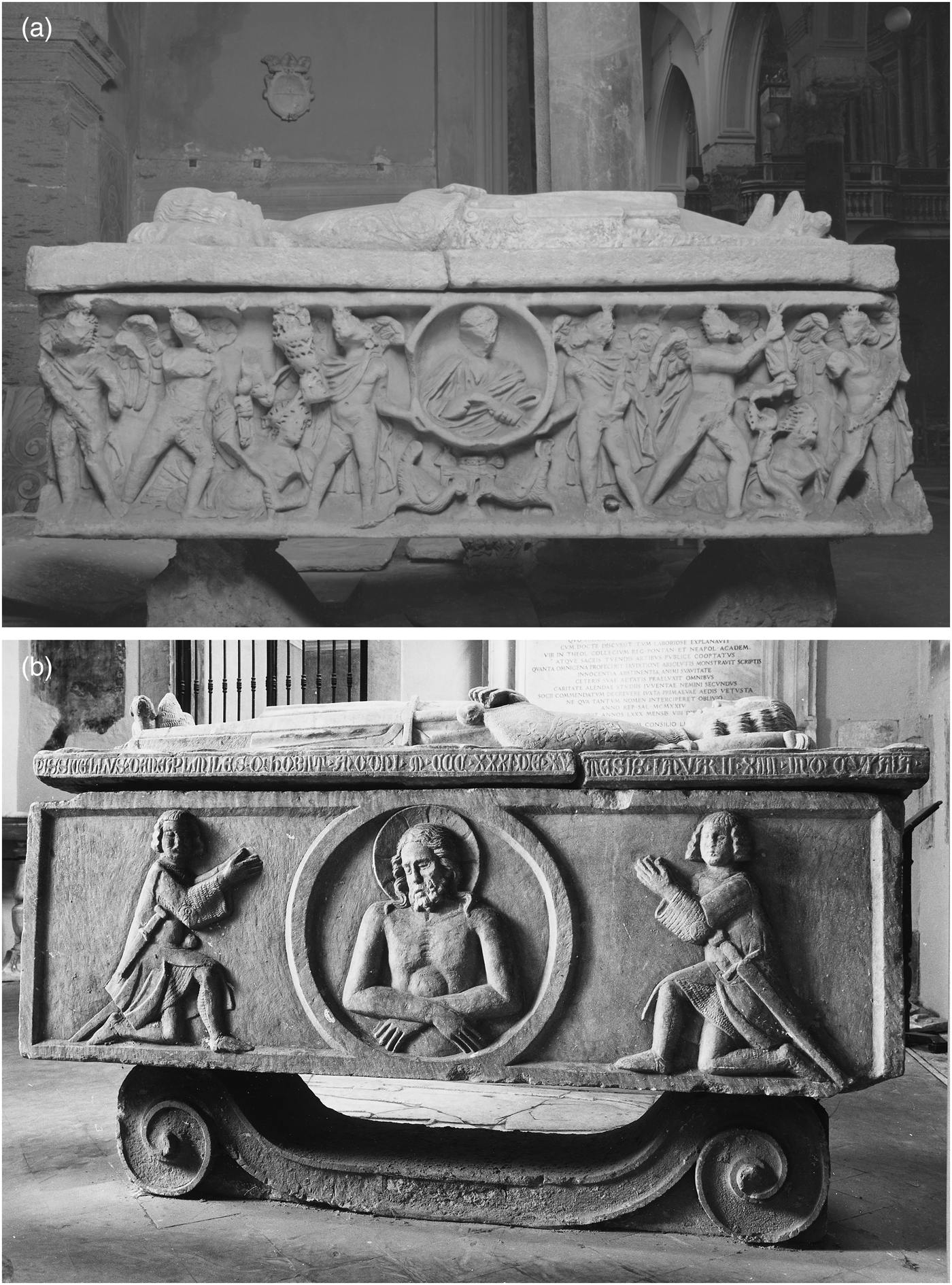
Fig. 6. (a) Piscicelli sarcophagus, antique face. Santa Restituta, Naples. Photo: D-DAI-ROM 66.1862 (H. Koppermann). (b) Piscicelli sarcophagus, medieval face. Santa Restituta, Naples. Photo: Conway Library, The Courtauld Institute of Art, London (A76/2220).
In another type of reversal, medieval tomb slabs were made from detached sarcophagus fronts flipped over to provide blank supports for new carving or incision. The extent of this practice is hard to judge, as most such monuments remain in situ in church pavements. Occasionally the old image is exposed when the floor is disturbed by accident or design. In the course of restoration work at Santa Sabina, Rome, early in the twentieth century, a slab commemorating the death of the Dominican Prior Ildebrandino da Chiusi (d.1309) and bearing his full-length image framed by a dedicatory inscription was dislodged. It was found to have been recuperated from a third-century strigillated sarcophagus with the spousal handshake motif.Footnote 24
More than a dozen of these funerary sarcophagus reversals have been published. Most were performed in the thirteenth and fourteenth centuries. In addition to the Seasons, handshake and open-door motifs, they include mythological scenes, erotes, garlands and other pagan, classical or neutral designs, but no Christian themes. The only claimed exception is a dextrarum iunctio sarcophagus (Fig. 7a) that was turned around to create the tomb of Urban VI (d.1389) in the Vatican Grotto (Fig. 7b). Although qualified by some observers as early Christian, that attribution is doubtful.Footnote 25 Its spousal handshake scene includes elements that are not found on any of the surviving Christian monuments that incorporate this iconography; the marriage god Hymenaeus with the couple and especially the standing corner figure on the left making a bloodless sacrifice securely declare the chest to have been originally made for a non-Christian customer, and there is no reason to suppose that the medieval patron and artisans would have failed to grasp the pagan character of such imagery.Footnote 26
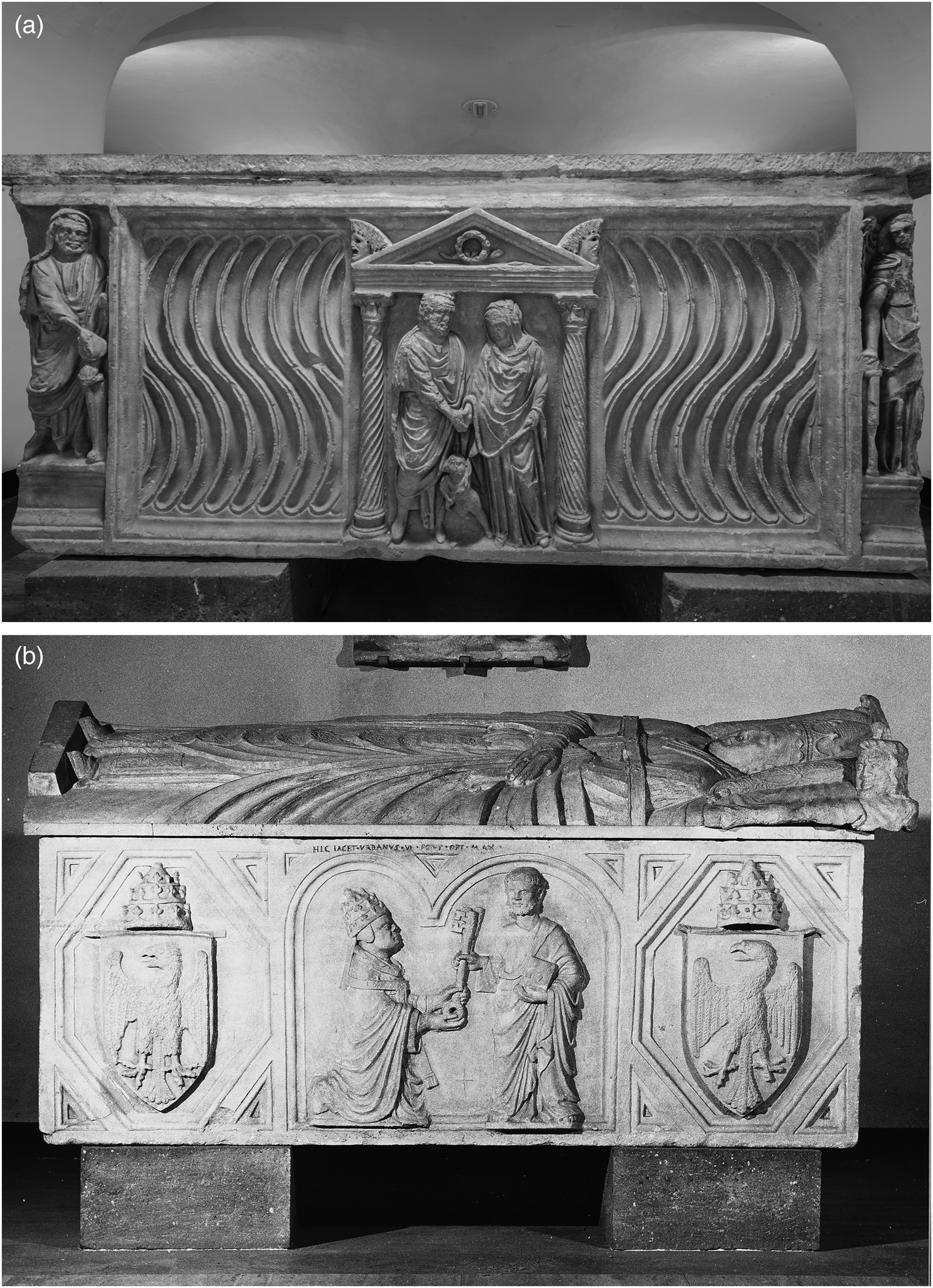
Fig. 7. (a) Sarcophagus of Urban VI, antique face. Saint Peter's, Vatican City. Photo: M. Falcioni, with kind permission of the Fabbrica di San Pietro in Vaticano. (b) Sarcophagus of Urban VI, medieval face. Saint Peter's, Vatican City. Photo: Conway Library, The Courtauld Institute of Art, London (A73/3137, by James Austin).
The discreet placement of classical imagery out of the viewer's sight in the construction of these commemorative monuments could have signalled a pious antipathy to paganism, but the primary rationale was probably practical, all the more so in the many instances where the disguised imagery is anodyne. Reversing a sarcophagus or turning over its front face was an efficient way to reuse expensive marble while making space for Christian religious affirmation, self-representation or contemporary forms of luxurious exhibition. Whatever the rationale, there appear to be no analogous examples of concealing early Christian relief carving.
Another camouflage technique is recarving. Artisans sometimes erased and replaced the image in a portrait clipeus, in the central mandorla of a strigillated design or in an inter-columnar space. Since sculpture in stone is a subtractive process, this usually left insufficient material for extensive new relief carving. The reclaimed blank surface could, however, be refilled with a flat motif like a cross or heraldic arms.Footnote 27 One cannot reconstruct imagery that has been obliterated, but the inference that it was not likely to have been explicitly Christian is sometimes confirmed by other subsisting elements of the original programme.
Thus, Seasons still stand at the corners of a late third- or early fourth-century sarcophagus in Sardinia, the central panel of which presents only an austere, flat Latin cross (Fig. 8; ASR V.4, 231: no. 190, fig. 75.5; Porcu Gaias, Reference Porcu Gaias1996: 12, cat. 3). Pesce (Reference Pesce1957: 97–8, no. 55, figs 105–6) thought the cross was original, and many Christian sarcophagi do have a cross in a central field. Most of these are not metropolitan (e.g. Rep. II: 312–59, 407, 408), although there are also Roman examples (e.g. Rep. I: 243, 687, 856). In every case, however, the arms of the cross are flared at the ends and quite unlike the stark form of the one in Sardinia, which seems to be an early modern substitution, similar to another sarcophagus in Milan with consular figures preserved at the corners and a flat, simple cross in the centre (Rep. II: 292).Footnote 28 Such a cross could have replaced a standing figure of the deceased, but the erased and refilled field might also have borne pagan imagery, like the Three Graces on a comparable sarcophagus formerly in Hever Castle, England.Footnote 29

Fig. 8. Strigillated sarcophagus front. Chiesa di San Francesco dei Cappuccini, Sassari, Sardinia. Photo: Porcu Gaias Reference Porcu Gaias1996: 12, cat. 3, © Archivio Ilisso Edizioni.
Even when all that remains of the carving are architectonic forms, it may be possible to make an informed inference regarding the original imagery. On a reused monument in Pisa, the only preserved antique elements are columns, capitals and connecting arches; whatever appeared under the arcade was entirely replaced in the fourteenth century by four shields bearing the arms of the Rustichelli family and two crosses (Arias, Cristiani and Gabba, Reference Arias, Cristiani and Gabba1977: 111, A 20 int., figs 108, 109). The even number of bays, however, strongly implies that the imagery was not Christian. While arrangements with four or six niches may not be especially common on pagan sarcophagi, they are entirely foreign to the Christian corpus.Footnote 30 Only a single instance appears in the Repertorium and it is an obvious emulation of a pagan prototype; the Christian imagery appears only on the short sides.Footnote 31
The actual revision, rather than simple elimination, of images was largely limited to portraits (Prusac, Reference Prusac2016: 18, 79–92, 121). The mere substitution of new self-representations for old had no particular religious resonance; however, recarving could also operate to Christianize a pagan sarcophagus, just as Roman statues were transmuted into Christian saints (examples in Wiegartz, Reference Wiegartz2004: 147–51). The original clipeus busts on two sarcophagi in Pisa were refashioned early in the thirteenth century into a bearded, nimbed, blessing Christ (Fig. 9) and a veiled, cross-armed Virgin, thereby rendering the antique vessels suitable repositories for the relics of the local holy figures Beato Domenico Vernagalli and Santa Bona. Both strigillated sarcophagi are likely pagan antiquities, the former more securely so given the satyrs still dancing at its corners.Footnote 32

Fig. 9. Sarcophagus front. Camposanto, Pisa. Photo: D-DAI-ROM 34.708 (J. Felbermeyer).
The recarving examples do not provide extensive information concerning later attitudes towards Christian and pagan sarcophagus imagery. Both sorts were reworked to repair damage and alter portraits, and neither underwent extensive lapidary surgery to remodel or replace the iconography. Yet, it is significant that the erasure of imagery seems to have been limited to, or at least concentrated within, the pagan group, while any new assertion of a religious denomination was, of course, always Christian.
A final category of concealed reuse is the incorporation of sculpture into ‘statue walls’ by late-antique and medieval builders. Unfortunately, this activity was generally successful in permanently concealing the original imagery. Either the walls remain intact, continuing to guard their secrets, or the recoveries are too fragmentary to interpret. Archaeological investigation or fortuitous rebuilding and renovation has, however, overcome these impediments at some sites, permitting Robert Coates-Stephens (Reference Coates-Stephens, Bauer and Witschel2007) to describe a broad gamut of the iconographical types and chronological periods involved, including pagan idols, private portraits and architectural elements extending from the Hellenistic period to the fourth century.Footnote 33 To the extent that these fragments represent bits of free-standing statuary, the Christian absence is unsurprising; very few such sculptures were produced. But sarcophagi were also used as raw material for construction. Their bulk was an inconvenience but not an insurmountable obstacle, as they could be broken to bits just like statues and buildings. The lack of identifiably Christian imagery in disaggregated construction is, therefore, not highly probative but at least consistent with a pro-Christian bias in destructive reuse.
CONCLUSION
The statistics are imprecise and incomplete, but the essential finding is robust: there are far fewer fourth-century Roman sarcophagi without Christian imagery than the pagan presence would suggest. This deficit cannot be explained away by errors of classification, gaps in cataloguing or anomalies in dating. A parting of the commemorative ways between Christians and non-Christians would explain the numbers, but neither literary nor material evidence implies any revolution in late pagan attitudes that would account for such a division.
The shortfall in sarcophagi without explicit Christian iconography is best attributed to a difference in survival rates. Several factors could have led to asymmetric preservation. Some Christian sarcophagi may have benefited from their deposition in Roman churches, church annexes or adjacent cemeteries, although archaeological data in this regard are severely limited.Footnote 34 Selective iconoclasm was not likely a major ingredient. Pagan sarcophagi were often appropriated by later Christians, and neutral or secular themes would be less susceptible to physical attacks; yet, hatred or simply disrespect of images not meriting Christian veneration probably had some impact.
A tendency to conserve holy images, especially pictures of Christ, was probably the most important factor. At least some Christians must have hesitated to destroy them, whether motivated by pious admiration or superstitious fear. The preservative effect was evidently insufficient to prevent the wholesale loss of early Christian sarcophagi, but it did provide a comparative advantage. Corroboration of this intuition appears in certain patterns of reuse, in particular in the known instances of sarcophagi reversed or inverted in the Middle Ages. The instances are not many, but they do support the view that Christian and non-Christian imagery did not always receive the same treatment.
The pagan sarcophagus deficit is not mere statistical noise in the general swirl of destruction that eliminated tens of thousands of monuments. Nor, however, does it demand a vigorous or universal pattern of Christian bias; several hundred individual choices made over a millennium following the end of Roman production would suffice. The fourth-century pagan sarcophagus gap may therefore be regarded as an archaeological illusion arising from the cumulative effect of historical attitudes and behaviour.
APPENDIX
This Appendix provides additional information regarding the construction of Charts 1, 2 and 3.
Demography: Chart 1
Chart 1 presents the following data, based on Couzin (Reference Couzin2014):

The methodology may be summarized as follows:
1. The cost of a sarcophagus was calculated by multiplying the quantity of material (based on average size) and days of labour (mainly carving) by unit costs derived from Diocletian's Prices Edict of 301, a methodology similar to DeLaine (Reference DeLaine1997). The results compare favourably to spotty epigraphic evidence. The analysis was performed for Christian sarcophagi, but no adjustment should be required for neutral or pagan monuments.
2. The number of individuals wealthy enough to purchase a sarcophagus was derived from population estimates and income distribution models. The urban population as a whole was considered to have declined from 900,000 in AD 250 to 600,000 by 400 (see, in particular, Purcell, Reference Purcell and Harris1999). Studies of income in ancient Rome and its distribution (Scheidel and Friesen, Reference Scheidel and Friesen2009; Milanovic, Reference Milanovic2010) were extrapolated taking into account fourth-century conditions, in particular a decline in per capita income and increase in inequality (Hopkins, Reference Hopkins, Scheidel and von Reden2002: 207; Jongman, Reference Jongman, Bang, Ikeguchi and Ziche2006: 247; Milanovic, Reference Milanovic2010: 19). Having regard to the levels of income and the cost of a sarcophagus, the number of sufficiently well-to-do Romans was estimated to have fallen by two-thirds from AD 250 to 400, from over 60,000 to under 20,000.
3. The Christian and non-Christian components were then disaggregated. The literature on rates of Roman Christianization is voluminous (see, in particular, Stark, Reference Stark1996; Hopkins, Reference Hopkins1998). A complicating feature is religious fluidity (Kahlos, Reference Kahlos2007; Cameron, Reference Cameron2011a: 176–7; Jones, Reference Jones2012); however, any uncertainty at the margins would not likely affect the general conclusion. The Christian population of Rome was estimated at 5 per cent in 250, rising to 75 per cent by 400. The rate of Christianization of upper income groups is controversial (Haehling, Reference Haehling1978; Barnes, Reference Barnes1995; Mathisen, Reference Mathisen2002; Salzman, Reference Salzman2002; Cameron, Reference Cameron2011a: 173–205). A judgment was made to take some delay into account; the percentage of well-to-do Christians was treated as somewhat lower at first, rising to equality with Christian numbers in general by 400.
4. To facilitate comparison with sarcophagus data, these population figures were converted into annual anticipated deaths by applying an average mortality rate (Scheidel, Reference Scheidel1999; Woods, Reference Woods2007). Since the great majority of preserved sarcophagi were made for adults, the numbers were halved as a rough way to account for childhood mortality; this affects the absolute numbers of the vertical scale, but not the substance of the chart.
The data so determined were cumulated as quarter-century sums on a simple linear assumption; e.g. the number of deaths for the period 275–325 is equal to 50 times the arithmetic average of annual deaths for that period.
Sarcophagi: Chart 2
Chart 2 presents the following data:

As noted in the text, Dresken-Weiland (Reference Dresken-Weiland2003: 64–5, table 8) tabulated pagan and Christian sarcophagi from published catalogues. In comparable format, her results were:

The Chart 2 data significantly increase Dresken-Weiland's ‘pagan’ category. A net increase of about 60 sarcophagi is due to minor adjustments, both positive and negative, based on the author's review of the publications and the addition of the later-published ASR I.3. A much more important addition arises from the strict classification criteria for Christian attribution, as discussed in the text. The methodology was as follows:
1. The Christian sarcophagus corpus was initially based on the inventories prepared by Koch,Footnote 1 adjusted mainly to exclude sarcophagi used outside Rome to preserve comparability with the demography analysis.Footnote 2 The number of Christian sarcophagi was thereby estimated at just over 600. The comparable Repertorium number is almost 1,200, about 1,400 in Provoost (Reference Provoost2011).
2. In order to err on the side of generosity towards the pagan numbers, Provoost's figures were used to identify an additional group of sarcophagi that could be regarded as potentially used by non-Christians, numbering about 750. This group was divided amongst the three half-century periods from AD 275 to 425, based on a review of the dates assigned to the excluded pieces by the Repertorium (on which Provoost generally relies for dating).
3. Finally, the additional sarcophagi assigned to each period were allocated between the pagan and Christian categories by applying the pagan and Christian percentages otherwise applicable to each period, i.e. the percentages determined before making the addition. The result is to substantially increase the number of pagan sarcophagi, with a much smaller change in their percentage of the total.
4. One alternative would have been to allocate the excess 750 sarcophagi based on population percentages. This is over-generous to the pagans, as it assumes a greater participation in sarcophagus use with respect to the ambiguous and fragmentary monuments than is seen in the cases that can be verified. Nonetheless, this alternative provides a useful check. It shows a smaller but still clear deficit, as noted below in connection with Chart 3.
Comparison: Chart 3
This chart combines the data in Charts 1 and 2.
The hatched column, labelled ‘% pagan deaths’, is a restatement of the values in the data table above for Chart 1, dividing the pagan by the total for each half-century period. The solid column, labelled ‘% pagan sarcophagi’, similarly restates the values in the data table above for Chart 2.
The same operation applying the alternative, more generous, method of allocating additional sarcophagi between pagans and Christians based on population percentages would raise the solid bar for the mid-century period from 22 per cent (as shown in Chart 3) to 38 per cent, still well below the population percentage of 64 per cent. For the final half-century, the figure of 7 per cent would rise to 11 per cent.














